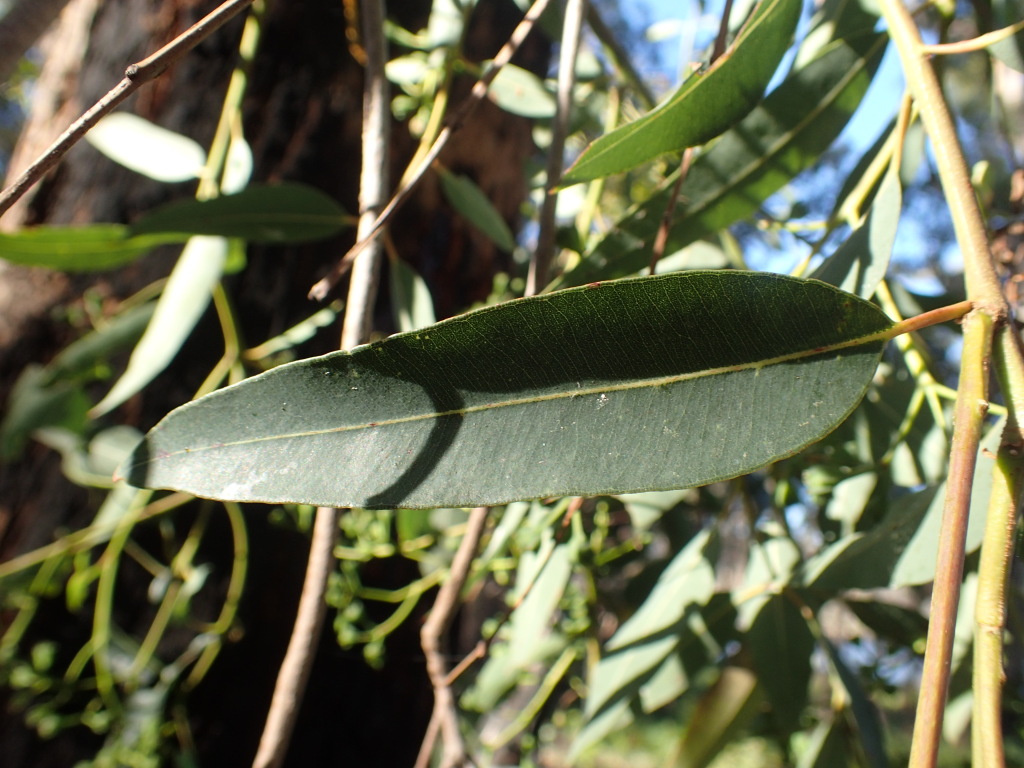Angophora
Trees or shrubs; bark rough and fibrous, or smooth. Leaves dimorphic, lateral veins very close, straight and parallel; juvenile leaves, opposite, cordate at base, sessile, often hispid, with raised oil glands; adult leaves opposite, lanceolate and falcate, petiolate, usually glabrous. Inflorescence a panicle of 3–7-flowered corymbs or umbels. Flowers creamy-white to creamy-yellow, pedicellate; calyx-lobes 4 or 5, free, reduced to persistent projections on rim of hypanthium; petals 4 or 5, orbicular, imbricate, broadly attached at base, deciduous; stamens numerous in several whorls, free; anthers versatile, bilobed, opening by 2 longitudinal slits; ovary inferior, usually 3-celled. Fruit a hard, woody, ribbed capsule enclosed mostly by the persistent hypanthium, dehiscing by immersed terminal valves; seeds 1 per cell, broadly elliptic, flat, cotyledons folded.
10 species, all endemic in eastern Australia.
Jeanes, J.A. (1996). Myrtaceae. In: Walsh, N.G.; Entwisle, T.J., Flora of Victoria Vol. 3, Dicotyledons Winteraceae to Myrtaceae, pp. 942–1044. Inkata Press, Melbourne.
 Spinning
Spinning


